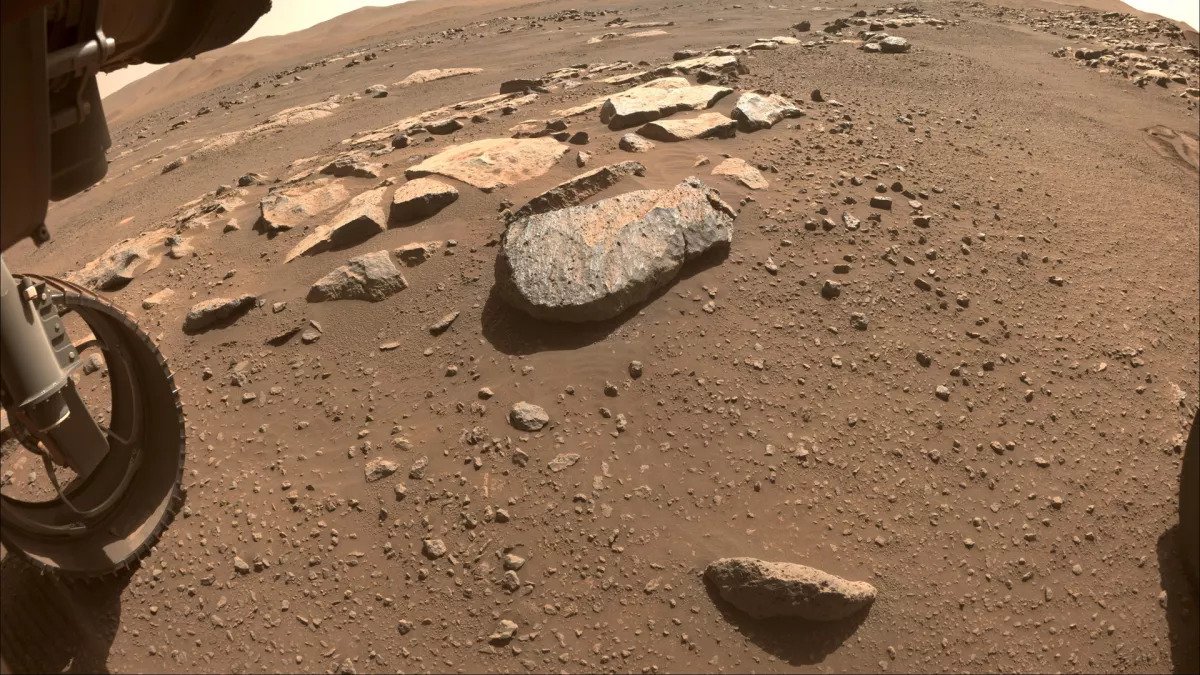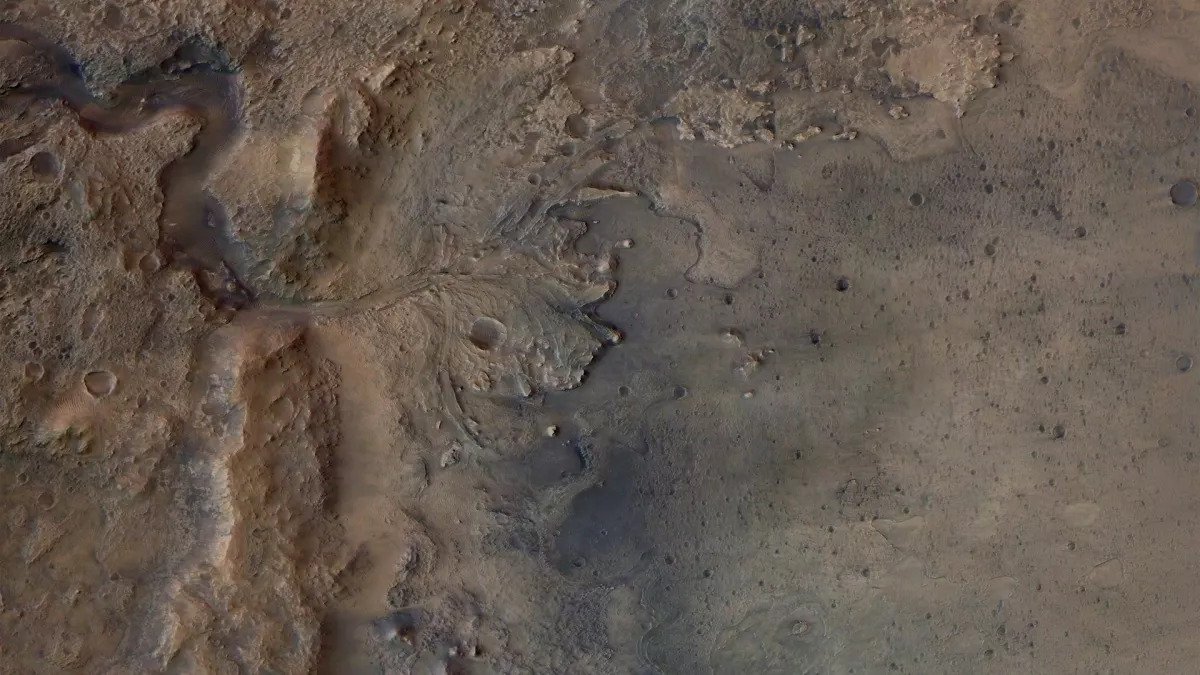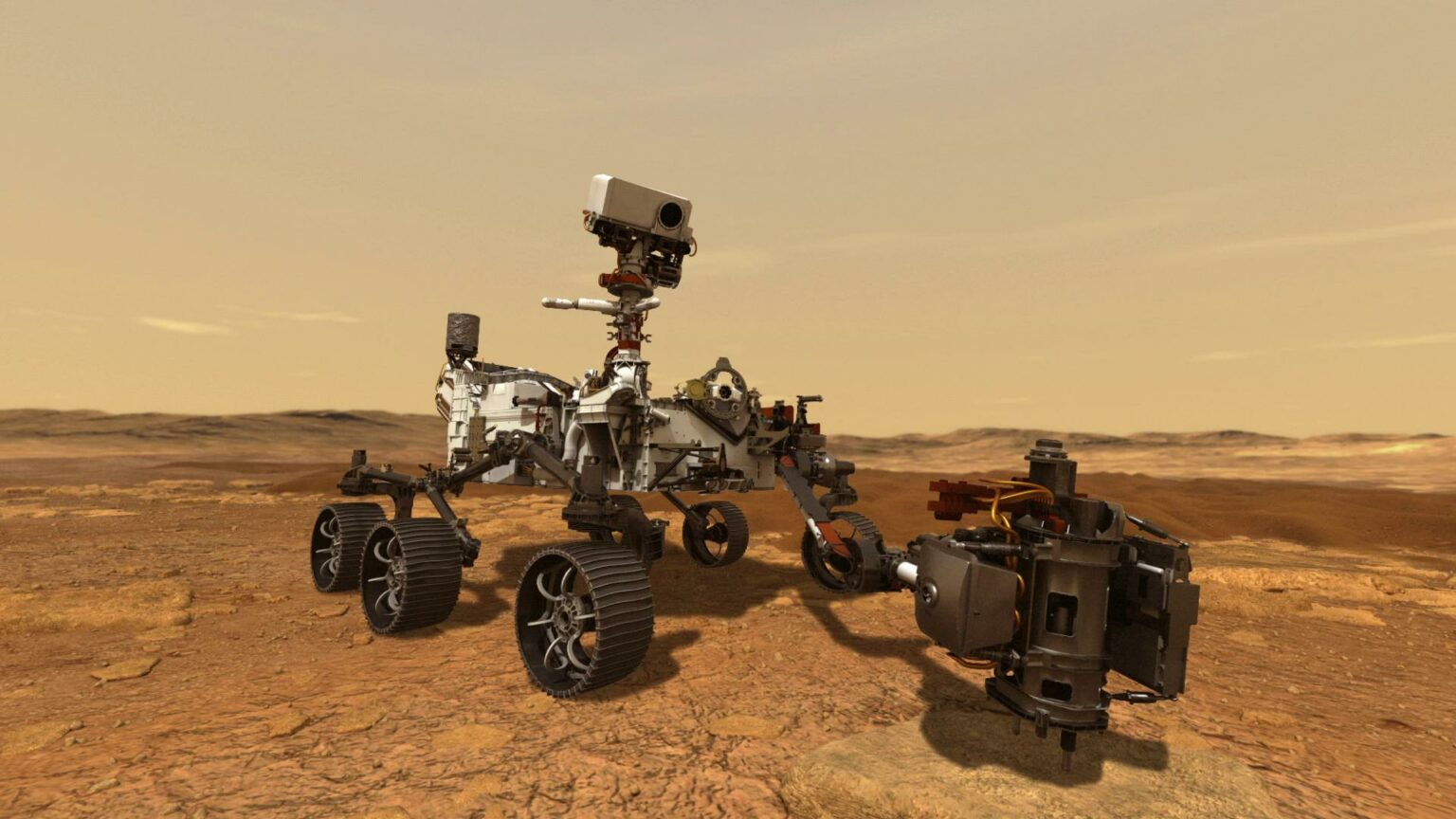In the Jezero crater, which the Perseverance rover is currently exploring, there are unexpectedly a lot of igneous rocks and unexpectedly little clay. Scientists are trying to reproduce the history of this place, which could explain this ratio.

Perseverance Rover explores volcanic rocks
The main result of the work of the Perseverance rover on Mars over the past year was the study by scientists of the geology of the Jezero crater. And the results of this study surprised scientists quite a lot. As for the probe landing, they knew that this ancient geological formation is the bottom of a lake that dried up many hundreds of millions of years ago.
Everyone expected to find very thick layers of clay and other sedimentary rocks here, and therefore tried to organize the planting of Perseverance as close as possible to the dried river delta. However, even in this place, the rover found a lot of burnt stones, which are evidence of volcanic activity.
In particular, the scientists studied two small geological formations: Séítah and Máaz. They both have a distinct volcanic origin, and the first partially overlaps the second. Moreover, both of them are part of a single geological formation, which is slightly raised above the surrounding landscape and tilted by 10 degrees.
Mysterious processes that gave rise to volcanic rocks
The main mystery of the obtained results of geological studies is that on Earth such elevated and inclined areas of the crust are usually formed as a result of tectonic processes. And on Mars, it is believed that there has never been a movement of lithospheric plates. And in general, there are no visible signs of volcanic activity near the Jezero crater.
However, recently scientists have put forward an interesting hypothesis about the Gale crater, in which the Curiosity rover operates. Crystals were also found there, which could only have been formed as a result of volcanic activity. And scientists were able to simulate the scenario of how hidden volcanic activity could be combined with the existence of the lake.

Perhaps something similar was happening in the Jezero crater. But that only adds to the questions. After all, we are talking about volcanic processes that have a much larger scale than anything that is currently observed on the red planet.
Mystery of Martian Clay
No less a mystery than the excess of volcanic stones is a clear lack of clay. Clays are formed due to the erosion of igneous rocks by water. Ideal living conditions are created inside them.
There are quite a lot of clays in the Jezero crater. And they have quite a lot of iron-containing compounds that are found on Earth at deep sources, where there is usually a lot of microscopic life. But the sedimentary rocks are much smaller than expected.
Now researchers are debating whether there was a lake in the crater for much less time than previously thought, or just the water level in it was extremely low. This issue is all the more complicated because the traces of running water clearly indicate that it poured into the reservoir in large quantities and lasted for a long time.
Perseverance Samples
Fortunately, Perseverance has a rock exploration facility that other rovers didn’t have. It can preserve soil samples. The next decade they will be collected and delivered to Earth by the Mars Sample Return mission.

Scientists are looking forward to its return. After all, it will be much easier to date geological samples in an Earth laboratory. And scientists will finally be able to reproduce the entire chain of events that led to the formation of an amazing geological picture in the Jezero crater.
According to www.space.com
Follow us on Twitter to get the most interesting space news in time
https://twitter.com/ust_magazine
